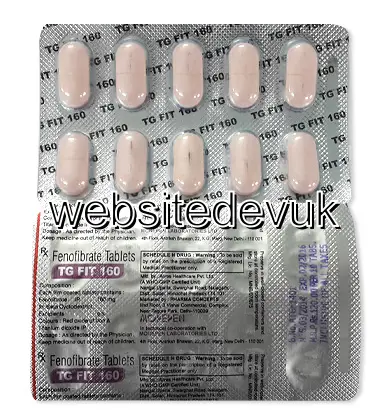| Package | Dosage | Price | Price per Dose | |
|---|---|---|---|---|
| Dosage: 160mg | ||||
| 360 pill | 160mg | £450.36 | £1.25 | |
| 180 pill | 160mg | £233.48 | £1.30 | |
| 120 pill | 160mg | £159.23 | £1.33 | |
| 90 pill | 160mg | £126.02 | £1.40 | |
| 60 pill | 160mg | £87.91 | £1.47 | |
| 30 pill | 160mg | £46.88 | £1.56 | |
| Dosage: 200mg | ||||
| 360 pill | 200mg | £615.46 | £1.71 | |
| 180 pill | 200mg | £320.43 | £1.78 | |
| 120 pill | 200mg | £217.85 | £1.82 | |
| 90 pill | 200mg | £171.93 | £1.91 | |
| 60 pill | 200mg | £120.15 | £2.00 | |
| 30 pill | 200mg | £64.47 | £2.14 | |

Fenofibrate Description
Understanding Fenofibrate
Fenofibrate is a medication commonly prescribed to help manage high levels of triglycerides and cholesterol in the blood. It belongs to a class of drugs known as fibrates, which work by activating specific receptors in the body called peroxisome proliferator-activated receptors (PPARs). When these receptors are activated, they enhance the body's ability to break down fats, leading to a reduction in bad cholesterol (LDL) and triglycerides. At the same time, Fenofibrate can increase levels of good cholesterol (HDL), promoting overall cardiovascular health.
How Fenofibrate Works
The primary effect of Fenofibrate is its ability to modify lipid metabolism. It stimulates the activity of enzymes involved in the breakdown of triglycerides and enhances the removal of LDL cholesterol from the bloodstream. This dual action makes it an effective choice for patients who have persistently high triglycerides and LDL levels despite dietary and lifestyle modifications. Fenofibrate's mechanism also includes reducing the production of certain fats in the liver, further contributing to its lipid-lowering effects.
Benefits of Using Fenofibrate
Many patients notice improvements in their lipid profiles within weeks of starting Fenofibrate therapy. The medication not only lowers triglyceride levels but can also positively influence other lipid parameters. This comprehensive effect reduces the risk of developing atherosclerosis and other cardiovascular diseases. Some studies suggest that Fenofibrate may provide additional benefits for patients with metabolic syndrome, helping to stabilize blood sugar levels and improve insulin sensitivity.
Possible Side Effects and Precautions
While Fenofibrate is generally well-tolerated, it can cause side effects in some individuals. Common side effects include gastrointestinal issues such as nausea, abdominal pain, or diarrhea. Some people may experience muscle pain or weakness, which warrants medical attention. Liver function should be monitored during treatment because, in rare cases, Fenofibrate can affect liver enzymes or cause an increase in bilirubin levels.
It’s important to inform your healthcare provider about any existing medical conditions, especially kidney or liver problems, before starting Fenofibrate. The medication may interact with other drugs such as blood thinners or statins, so thorough medical history and regular blood tests are essential during treatment.
Usage and Dosage Guidelines
Fenofibrate is typically prescribed in the form of tablets or capsules. The dosage depends on individual health factors, the severity of lipid abnormalities, and how well the patient responds to the treatment. Generally, it is taken once daily with food to enhance absorption. Patients should follow their healthcare provider’s instructions carefully and not alter the dosage without consultation. Regular monitoring is critical to assess effectiveness and catch potential side effects early.
Conclusion
Fenofibrate is a valuable medication for managing dyslipidemia and reducing cardiovascular risk. Its ability to lower triglycerides and LDL cholesterol while increasing HDL makes it a preferred choice for many patients. However, like all medications, it requires proper medical oversight to minimize side effects and ensure optimal outcomes. Patients should maintain open communication with their healthcare providers and adhere strictly to the prescribed regimen to achieve the best results from Fenofibrate therapy.
